Thank you for visiting! By the way… any links on this page that lead to products on Amazon and other stores/partners are affiliate links Aquarium Store Depot earns a commission if you make a purchase.
Imagine a tropical rainforest pool, teeming with colorful fish and surrounded by lush vegetation. Listen to the sound of water trickling over the rocks or even a cascading waterfall gushing in. It requires a little work, but you canhave this little slice of nature in your own home if you build a paludarium.
This guide will teach you how, so let’s jump right in and learn about paludariums!
Key Takeaways
- A paludarium tank includes both aquatic and terrestrial species all in the same tank
- This kind of setup is a combination of an aquarium and a vivarium, but each paludarium is unique
- Paludariums generally use shallow or open-fronted tanks, but they need most of the same equipment used in aquariums
- Consider the needs of each plant and animal species in your paludarium to create a healthy ecosystem
What Is A Paludarium Tank?
A paludarium is an artificial ecosystem that includes terrestrial and aquatic elements, plants, and animals.
Imagine taking a slice out of nature, right where a waterfall or river bank meets a shallow pool, and placing it in a glass box. You’re picturing a paludarium!
This kind of setup requires careful planning, and a bunch of different skills, but don’t let that put you off. Anyone can build a great paludarium if they get the right equipment and take their time in planning and researching the project.
Planning
Setting up a great paludarium combines science, engineering, art, and a whole lot of fun! The final product is a complex ecosystem, and success requires some pretty careful planning.
Start by defining exactly what you want to achieve. Do you want a tropical rainforest setup, a coolwater pond scene, or even a brackish mangrove scape with mud skippers?
A regular tropical paludarium could have a shallow, level land part, or a dramatic vertical wall stuffed with interesting plants. It all depends on your vision.
Take your time on this step, considering the availability of all the materials, equipment, plants, and animals you will need. Fortunately, you can purchase pretty much everything you’ll need online these days, wherever you live!
Paludarium Tank Setup
The basic elements of a good paludarium are a dramatic land section with beautiful terrestrial and semi aquatic plant species, and an aquatic section with aquatic plant and animal species (photo source).
Let’s take a look at the building blocks of this kind of setup before we move on to the plants and animals.
The Enclosure
Your first consideration when creating a paludarium is size.
You could make a compact paludarium that fits on your nightstand, or go all out and build something that takes up half a room – it all depends on your space, budget, and goals for the project.
Before we go any further, there’s one very important tip I should mention.
Paludariums can get very heavy, especially when you add loads of rocks and soil to the hardscape. Keep this in mind when choosing the size of your tank and its stand! A sturdy cabinet makes an ideal stand because you can keep all your equipment down below the tank.
You could use a regular aquarium tank to make a paludarium, but it’s going to look and work a whole lot better if you start with an enclosure with the right shape.
The ideal tank has a shallow front section, with higher side walls and a higher back. A square, shallow tank is another option if you want to make an island or grow free-standing plants.
Remember, terrestrial animals can easily escape open tanks, and even small fish can jump surprisingly high when they want to. Keep your pets’ safety in mind when choosing a tank shape.
Hardscape
The hardscape is the physical landscape of your paludarium. This is usually made up of rocks and driftwood.
Some paludarium tanks come with a pre-made stepped design at the back to save you on hardscape materials, but if you’re using a flat-bottomed enclosure, your going to want to stack hardscape at the back to create a steep slope or wall for your land portion.
Start by mapping out your design and planning the scape roughly before buying your materials. Once you have everything you need, practice stacking and arranging each piece.
What You See Is What You Get!
Buce offers a WSYSIWYG show pieces. Great for aquascaping. They make your aquascapes pop like no other!
You can do this outside of the tank at first for safety. Be very careful when placing large rocks into a glass tank – you could easily damage the glass, your back, or both!
Placing a layer of filter cloth or another soft, aquarium-safe material at the bottom of your tank will help to prevent cracking or chipping when you place your rocks and stones.
Pack your hardscape carefully, using gravity to keep everything in place. Plan your equipment layout at the same time, remembering hoses and cables from filters, pumps, and other hardware. Once you’re sure of your scape layout, use glue to hold everything together.
You have a few options here when it comes to adhesives.
Small objects can be bonded with superglue, but epoxy is better for heavy objects. Epoxy is also great for securing gravel to slopes where they would normally just roll down to the bottom of the tank. Silicon works too, but be prepared to wait a long time for it to set.
Substrate
The plaudarium substrate is the sand, soil, and gravel used on both the land and water sections. Apart from the aesthetics or ‘look’ of your setup, these different substrate types have different uses and benefits.
Natural sand is excellent for bottom feeder fish to forage around in.
Inert substrates like sand are great for the open water section of your tank, especially if you want to keep some fish or other aquatic animals.
Gravel is another nutrient-free substrate that can be used to create texture on the bottom of the water section, or used to fill gaps between the rocks in your hardscape.
However, sand and gravel are not great for growing live plants (except for epiphytes and air plants) because they contain no nutrients. A nutrient rich substrate for the land section or aqua soil for the aquatic and semi aquatic plants will produce much better results!
The Best Planted Tank Substrate
The world's standard in active substrates for planted tanks. Created by brand that founded modern aquascaping
Floating Shelf
It is possible to maximize your paludarium’s water capacity by using a floating shelf instead of packing in hardscape at the back of the tank. This method also allows you to keep more fish and maintain more stable water parameters.
A shelf is attached to the back and/or sides of your paludarium just above or below the water surface. Here you can plant either terrestrial or emersed plants and give animals like frogs and turtles a place to hang out above the water.
A floating shelf might look less natural, but in fact, this kind of feature is pretty common in nature. Streams often develop undercut banks, and fish, frogs, and loads of other animals hide and shelter beneath them.
Equipment
The tank, hardscape, and substrate are the bare bones of your paludarium tank, but you’re going to need some important equipment to bring movement and life to your setup. Let’s take a closer look:
Lighting
Lighting serves many important functions for your paludarium ecosystem. Firstly, it allows you to observe and enjoy your tank. Your lighting is also necessary to create a natural night/day cycle for your plants and animals.
Good paludarium lighting is essential for growing healthy plants both above and below the water. A clip-on light, lamp-style light stand, or hanging light are all workable options, just remember to use a good quality grow light specifically designed for plants.
The light for the professional aquascaper. If you are looking at producing an award winning or eye popping aquascape with demanding plants, this is the light for you!
If you plan on keeping reptiles in your paludarium, you might need another light source to keep them healthy.
Skink lizards, water dragons, and most other lizard species require a UVB lamp to help them absorb Vitamin D3 and maintain healthy bones. Many snakes and geckos do fine without UVB lamps, but be sure to research each species individually.
Heating
Just like any regular aquarium, you’re probably going to need a heater if you plan on keeping fish.
Choose a heater that matches the volume of water you’re going to have, and try to position it where it won’t look out of place. You can go with a standard aquarium heater but there are compact options designed specifically for paludariums too. If you use a canister filter, you can also opt for an in-line or purchase an OASE canister where you can place the heater inside the canister chamber.
If you plan on keeping reptiles in your paludarium, you might need to install a basking light and/or heatpad where they can hang out to regulate their temperature. Without going into too much detail here, these animals need a warm area and a cool area so they can move around and keep comfortable.
Filtration
A well-planned paludarium with plenty of live plants is a highly bioactive environment, but you’re still going to need good filtration if you plan on keeping fish. Aquarium filters have a bunch of benefits for your paludarium, but these are the most important ones:
- Filtration media (sponges etc.) create the perfect home for the helpful organisms we call beneficial bacteria. These bacteria turn harmful nitrogen compounds from animal waste, rotting food, and plant matter into less toxic materials. This is known as the aquarium nitrogen cycle, and you should definitely spend a few minutes learning the basic principles of this process before adding fish.
- Aquarium filters create water flow that prevents stagnation and improves oxygenation. Water flow also maintains an even temperature and spreads nutrients and carbon dioxide across the water column.
- Filters improve water clarity, trap debris, and remove solid waste particles from the water, making your tank look pristine.
You’re probably wondering what kind of filter to get? Well, there are many options to choose from. The most popular designs are sponge, hang-on back, internal power filters, and canister filters.
Canister filters are a great choice because they hold a large amount of filtration media and can be kept in a cabinet below your paludarium. This makes servicing the filter and rinsing the media much easier since you don’t have to reach into the tank or dismantle your hardscape.
For The Professional Aquascaper
With an easy to remove prefilter chamber and intregrated heater chamber, this is the most advanced canister filter you can buy today. German engineered and aquascaper approved!
Compact power filters are also ideal because they create good water flow and can be installed out of sight in a back corner. Just be sure to position them in an accessible spot in case you need to do some maintenance.
Humidity
Maintaining humidity for your terrestrial plants is very important. Remember, the humidity around ponds, rivers, and lakes is usually much higher than in your home, especially in tropical environments. So how do you keep your plants from drying out?
- Enclosed tank
A completely closed system will trap humidity, creating an excellent environment for tropical plants and semi aquatic animals. Unfortunately, this method often results in misty glass and reduced visibility.
- Add fog
A terrarium fogger is ideal for maintaining humidity in the land section of open-top paludariums. Pick up a product designed for keeping frogs and reptiles, or use a cool mist humidifier with a hose. You can even create an awesome fog waterfall this way.
- Use a manual garden mister spray
The cheapest and simplest option is to pick up a simple garden misting bottle and spray your land section a few times a day. This method works fine, but you might pick up some problems when you need to be away from home a lot!
- Use a pump and fine spray bar
You can maintain a humid environment in your paludarium by pumping water from the water section up to the land section and running it through a spray bar. You might need some careful adjustments to prevent splashing and get this just right, but it can be very effective.
Creating A Waterfall
A waterfall feature can transform a great paludarium into a true tropical paradise, and it’s really not that tough to make yourself!
The basic principle is to suck water from the bottom of the tank and pump it out above the water using your filter or water pump.
Simply install a submersible pump below the water line and run a hose up to the top of your rock feature. Adust the hose and hide the spout end for a more natural look.
Constant water flow will move fine gravel, sand, and even small plants on your hardscape and the bottom of the tank, so ensure everything is secure in the main stream.
This is all about having fun, so take your time and get creative! You could create multiple streams or even hide a small airstone right below the spot where the water flows into the tank to make your water feature even more interesting.
Other Equipment And Supplies
There’s a few more items you’ll need to maintain a healthy paludarium, but you probably already have these if you’re a fish keeper.
- Water test kit
Use your test kit to monitor your water quality and parameters, just like you would in a regular aquarium. Check your water pH before deciding which fish to add, and measure your ammonia and nitrite levels while you’re cycling your aquarium water.We cover all this topic on how to adjust these levels in other blog post. For pH, you can lower or raise with rocks or driftwood. You can also lower it with peat moss.
Best Aquarium Test Kit For Freshwater
With all the essentials and accurate testing, this test kit is the best one to get you started
Once you’ve added your fish and animals, monitor your nitrate levels regularly to work out a water change schedule.
- Thermometer
A thermometer allows you to keep an eye on the temperature in your paludarium. This is important for both terrestrial animals and aquatic life.
- Water conditioner
Water conditioner or dechlorinator is very important when using tap water in your paludarium. Don’t forget to treat your water each time you do a water change.
Seachem prime is a easy to use and affordable choice when it comes to remove chlorine and chloramines from your tap water. Highly recommended!
- Aquascaping kit
Growing plants above and below the water is one of the best parts of maintaining a paludarium. The thing about plants is, well, they grow.
You can minimize your plant maintenance by choosing small, slow-growing species, but you’re still going to need to get in and trim them once in a while. Aquascaping kits are ideal for trimming, shaping, and planting your paludarium plants.
- Gravel vacuum
Animal waste will accumulate in your water if you keep fish, frogs, or turtles, so you’re going to need to change your water regularly to keep it clean. A gravel vacuum is an ideal solution for removing old water and physical waste particles from the tank.
Adding Life
The amazing thing about a paludarium is that it supports both plants and animals, including terrestrial and aquatic species! The cornerstone of a great paludarium is healthy plant life, and there are loads of options to choose from.
Let’s take a look at some of the best paludarium tank plants.
Aquatic Plants
You can grow any of the regular aquatic plant species in a paludarium, including floating plants, stem plants, rosette plants, and epiphytic plants.
Many of the popular aquarium plants happily grow up and out of the water column if given the chance and emerging plants might even flower if they’re happy in their environment!
Purely aquatic plants aren’t always a good idea in paludariums. Some species like Vallisneria grow fast and may crowd out the limited water habitat available. Slow-growing rosette plants and epiphytes are usually a good bet for a low-maintenance setup. Here are a few solid groups:
Terrestrial plants
Small, humidity-loving plants thrive in paludariums and complete that tropical rainforest look. However, the plant’s tolerance for moisture is important and most succulents and desert plants are not suitable.
- Air plants
Air plants from the Tillandsia genus are perfect plants for the back wall of your paludarium because they don’t need soil and can even be grown on vertical surfaces. These interesting epiphytes need good airflow and humidity to thrive. Other plants that are happy to be emergent are:
- Java Fern – can also be semi aquatic
- Bromeliads
- Creeping Fig
- Carnivorous plants
Carnivorous plants like sundews and pitcher plants are ideal paludarium plants. These fascinating plants eat insects and other invertebrates and they will thrive in the damp conditions of your semi-aquatic habitat.
- Moss
Moss is perfect for covering damp parts of your hardscape. These moisture-loving plants need very little maintenance and add an extra layer of forest-green-goodness to your paludarium.
Typical aquarium species like Java moss can grow both below the water and on the land area if you keep it moist and provide good light.
- House Plants
Good old-fashioned house plants can make awesome additions to your paludarium. Choose smaller species that thrive in warm, tropical environments for the best results. Most terrestrial plants require good airflow to grow at their best, so position them toward the top of your terrestrial features.
- Bonsai
You can create a unique look in your paludarium by growing a small bonsai tree on the land portion. However, most bonsai species do not like having ‘wet feet’ so you’ll probably need to manage their soil moisture separately by keeping them in their own container.
Fish Choices
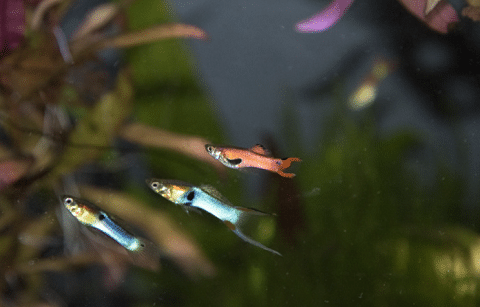
You could keep just about any freshwater fish in your paludarium tank if it holds enough water and has the right water parameters for that species. Most home paludariums have a water portion that is low volume, so you’ll probably be limited to nano species.
Let’s take a look at a few options:
All of these fish can be kept in tanks as small as 10 gallons, but there are many other species that you can keep.
Check out my guides to fish for five and ten-gallon aquariums for more paludarium stocking ideas!
Other Aquatic Animals and Invertebrates
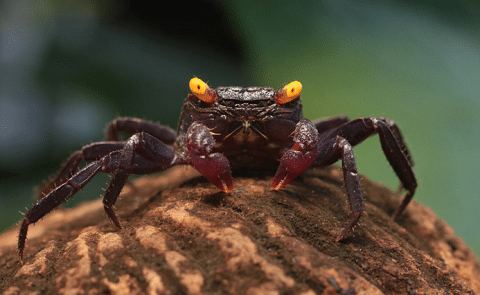
Fish aren’t the only livestock you can keep in your tank. Why not try out these other interesting critters? Several these function as good cleanup crew members.
Semi Aquatic Animals
Semi-aquatic or amphibious animals are ideal for paludariums because they can enjoy the land and water sections of their home. Of course, most of these species will need a closed tank to prevent them escaping!
- Dart frogs
- Tree frogs
- Toads
- Small turtle species
- American tiger salamander
FAQs
What is a paludarium tank?
A paludarium is a tank that incorporates both water and land space. This creates a natural environment for both aquatic and terrestrial species.
How do you turn a fish tank into a paludarium?
You can turn a fish tank into a paludarium by simply dropping the water level and attaching a floating shelf on the back glass. Of course, you’ll need to consider the amount of weight the shelf and glass can hold without support from below.
You can also pack hardscape at the back of an aquarium with a large footprint for a more natural semi aquatic environment. Some hobbyists go as far as removing the front pane of glass, lowering it, and refitting it, but this is not recommended for beginners.
What size should a paludarium be?
A paludarium could fit in the palm of your hand or fill a whole room, it all depends on your goals! Providing a safe and comfortable home for paludarium animals should be your top priority, so provide at least 5 to 10 gallons of water if you want to keep even the smallest fish.
What’s the difference between a vivarium and a paludarium?
Many people confuse vivariums and paludariums, but the difference is pretty obvious. A vivarium is an enclosure that houses terrestrial (ground living) plants and terrestrial animals like reptiles. Paludariums include a water habitat with terrestrial and aquatic species.
Can you use an aquarium as a paludarium?
Your old fish tank can make a great paludarium, although many people prefer an enclosure with a low wall in the front. The ideal fish tank has a large floor area and low walls.
Final Thoughts
I hope this basic guide has given you the inspiration to get out there and put together your own awesome paludarium. Follow the basic principles outlined in this post to get you started, but have fun researching and exploring all your options to create your own unique masterpiece. The sky is the limit!
Do you have a paludarium? Share your experiences in the comments below!
- About the Author
- Latest Posts
I’m thrilled that you found Aquarium Store Depot! Here you’ll find information on fish, aquariums, and all things aquatics related. I’m a hobbyist (being doing this since I was 11) and here to help other hobbyists thrive with their aquariums! I adhere to a high quality Editorial Process and Review products with real life field usage and practical analysis.

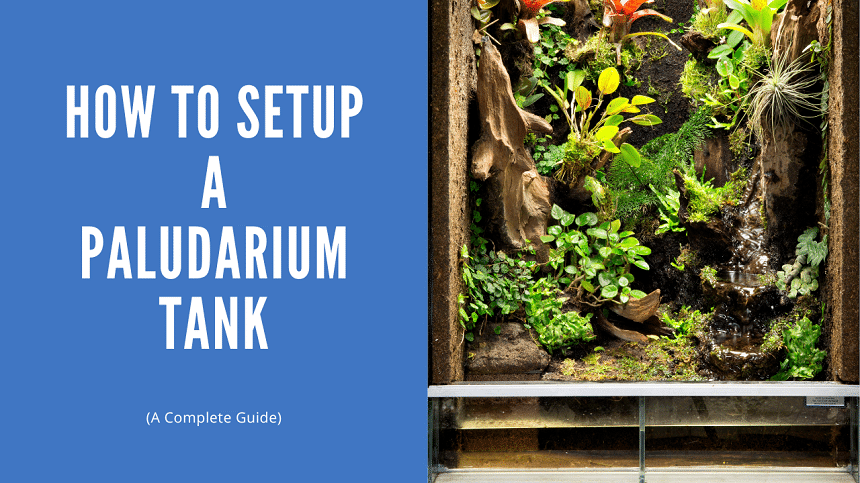
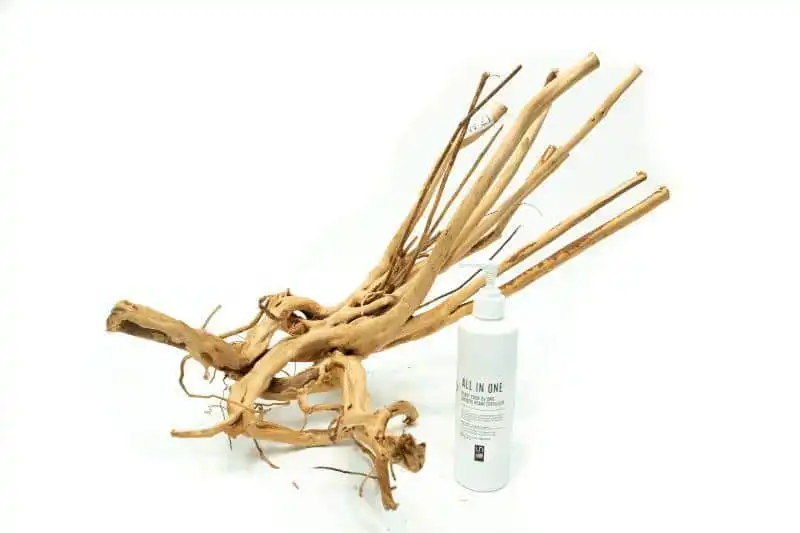
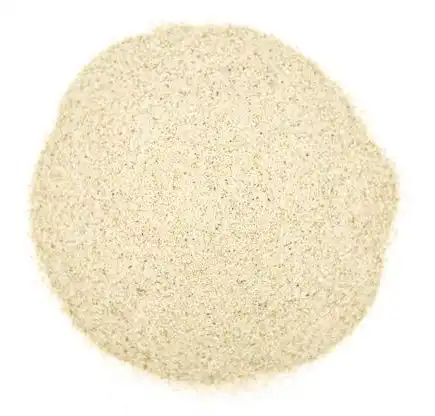


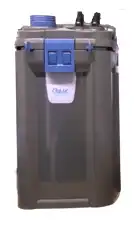

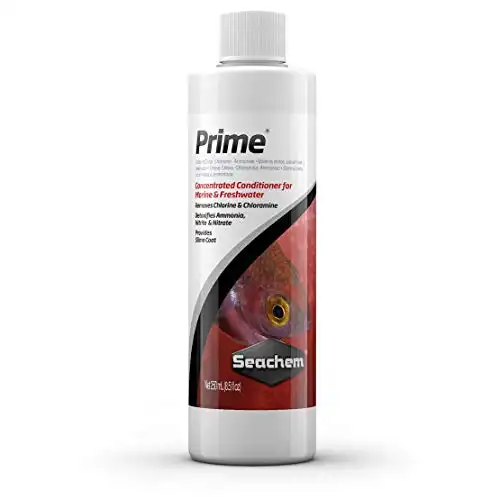




Hi there, just getting started on a project that I’m just calling (for now) an “indoor water feature”. We have a mid-century built-in planter with a metal basin. I’ve emptied all the old dirt. I’m going to seal up the walls and base and add a pond liner. After that I have some ideas on how I want it to look, but I can’t find any info on the steps to make it into (essentially) an open paludarium, because I don’t think anyone’s done exactly this, and shared the process. Please let me know if you have advice or resources. Thanks!
Hey there – great information; thanks! I am on my second paludarium, upgrading. I am in the planning process for a 36x18x36 Exo Terra that has a 20 gallon water portion. I am wondering about weights, and how much weight I can put in the tank. I understand the weight of water, and that the tank will hold that amount, but when adding lets say large boulders, stacking rocks, etc, I am sure there is a maximum limit, that I cannot seem to find anywhere. I have asked the manufacturer, but received a picture of a set up tank as a guideline, but no weight limits, ranges or stuff like that. Would you have any ideas?
Weight shouldn’t be too much of an issue with a glass tank as long as it is supported with the proper stand. When you can’t get a proper answer from a manufacturer – it’s time to look at forums and see what others are saying in the field. Here is a good like to read – https://www.gtaaquaria.com/threads/how-many-rocks-weight-can-an-aquarium-hold.12973/. There is a guy there who loaded up 750 lbs of holey rock in a 220 gallon tank with zero issues.